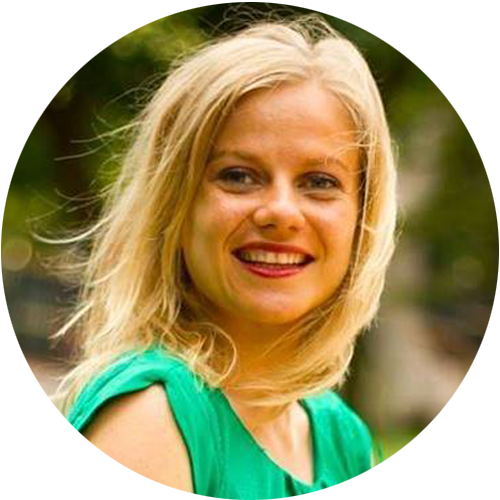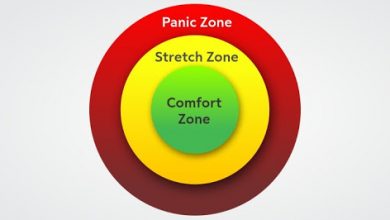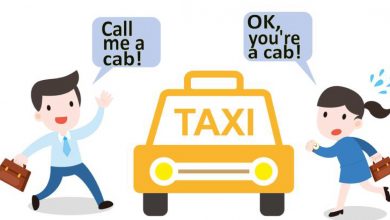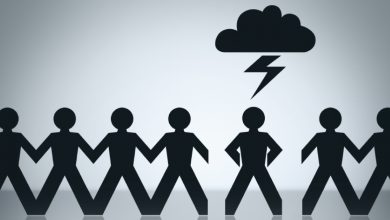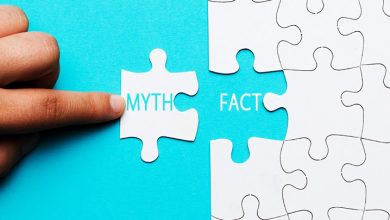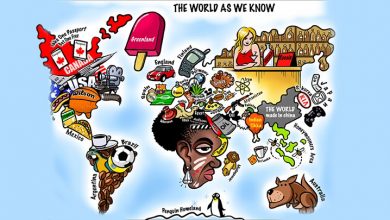How to deconstruct “otherism”
Stereotypes and racism are all elements of “otherism”, the understanding that someone different from “us” doesn’t deserve the same respect as us and is to be ostracized and potentially feared. This article gives insight on how to deconstruct “otherism", and who the "other" really is.
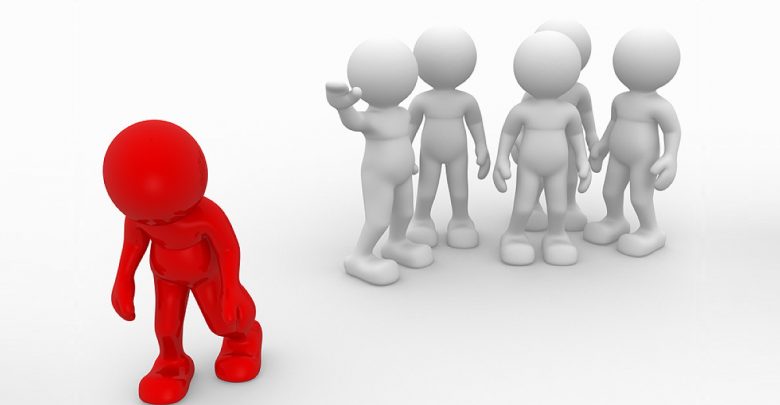
Why did I choose this tool? While there is a lot of material about otherism: where it comes from, its political function, why is it historically relevant and what negative effects we see because of it, there is less directly addressing how we can fight otherism. More important is how to do this, not as governments, institutions or even organizations but as individuals, and perhaps as trainers we can be able to support others to do the same. This article is an attempt to not only describe otherism but also suggest a perspective/method that can be useful in countering it.
How does this apply to being a trainer? The effects of otherism are not always conscious, therefore it is possible that as trainers we may be seeing certain types of people as “the other” without even being aware of it. It is necessary to bring this to our own awareness and make conscious and informed decisions rather than falling into the trap of otherness, particularly because as trainers working in an international context it is likely that we will be working with all kinds of people. It is also likely that we will give trainings that address racism, discrimination, human rights, or other issues that directly or indirectly deal with otherism, and therefore it’s necessary to have a deep understanding of the topic and the ability to support others in moving past otherism.
Main content:
The concept of “the Other” is a complex one, and it is hard to pinpoint exactly what it means. Does it have any meaning at all?
What I would like to do here is to concentrate on a phenomenon that derives from the concept; the act of othering as a manifestation of power relations. When we start describing ourselves as part of a group of people united in a “we”, while other people are constructed as fundamentally different, united in a “they”, we are using a powerful weapon that might serve to delegitimize others.
According to Michel Foucault, othering is strongly connected with power and knowledge. When we “other” another group, we point out their perceived weaknesses to make ourselves look stronger or better. It implies a hierarchy, and it serves to keep power where it already lies.
The examples from pre-1960s ethnography underlines an important element of othering – differences between societies are emphasized while similarities are hidden. It is easier to legitimize power over another group when this group seems to have very little in common with the group in power.
It’s hard to imagine a society in which we divide people into “us” and “them” without putting “us” above “them”. Simultaneously, it’s difficult to defend an idea of absolutely all group thinking as solely negative, because a completely individual mode of thinking makes it almost impossible to address discrimination and the collective aspect of power and power abuse. What is more important to remember, though, is that most of us are members of countless different groups, that might need to act as groups at different times. Context is important when playing out identities.
We cannot get away from the concept of the other, as it is too crucial for an understanding of the self. What we can do, though, is to limit the ways in which we group people up and construct them as something entirely different from an imagined “us”. The power of definition is a strong one, and when used in the context of othering, it continues to reinforce discrimination.
Engelund, S. R. (2011, October 14). Introductory essay – “The Other” and “Othering”. Retrieved October 4, 2018, from https://newnarratives.wordpress.com/issue-2-the-other/other-and-othering-2/
In light of the fact that “othering” can be used as a tool for dehumanization and even a justification for violence, while at the same time “othering” is a natural and sometimes needed human instinct, what can or should be done about it?
Being inclusive of everyone and practicing equality in all spheres of life seems like the best answer. And yet this still seems to fail to answer the question of how. Developing empathy and genuinely believing that each individual person is equal to us and worthy of belonging, respect and care is a point that each person has to reach on their own and not something that can really be taught or enforced from the outside. Sure the necessary laws and educational programs can be created and implemented, but if you have ever felt hatred just from the way someone looked at another, you will probably agree that there are aspects of “othering” that will never be resolved by any external mechanisms.
The only way to get past the walls and weapons created by otherism is to understand that there is at least one thing that binds us all together, even if it is the only one. This binding element is the fact that we all have the capacity to experience the same emotions and we all want to feel the good ones rather than the bad ones. It’s impossible to treat someone as an “other” when we see them as similar to ourselves, and in this way, we are all the same. We know what it’s like to feel sad, to feel happy, to feel guilty, to feel at peace. And by the same token, we all want to experience the positive feelings rather than the negative ones.
We are all made of the same stuff, not only physically (we all have a heart, and lungs, and blood…) but psychologically and emotionally as well. We all have the innate ability to experience joy, sadness, anger, fear, love, and every other positive and negative emotion.
Therefore, if otherism is an attempt to dehumanize groups of people, the way to humanize them again is through emotion and empathy. When we can feel the same as another, we will want to protect them from harm the same way we would want to protect ourselves or those that are close to us.
The way to do that is to have a genuine interaction with “the other”. To take the time to understand their hopes, their dreams, what they love, what they hate, what they fear, what they embrace. And through this, we can come to understand that the only differences between us are stemming from the ways that we use to feel the way we want to feel, or what makes us feel good or bad. But at the core, what we are experiencing (in terms of our emotions) is the same.
For example, 2 people could argue until they are blue whether it’s better to be a religious person or to be a yogi, while in reality if they were both honest and expressing their feelings they may realize that they are both trying to achieve the exact same goal, for instance peace of mind, and yet have different methods (yoga and religion) that help them to achieve their goal.
The language we use, our traditions or cultural ways, our ways of dressing, are all secondary to what those things actually mean to us. And there are times when we can be very wrong about what something means to someone else unless we ask and truly want to understand the answer. For instance, it can be easy to assume that a woman wearing a headscarf is a sign that she is being oppressed, when in fact an honest and open conversation with her may reveal that she wears the headscarf proudly and as a sign of self-respect. Another woman might just as proudly be wearing mini-shorts, and have just as erroneous misinterpretations made about her by those who don’t take the time to understand her and rely on their own assumptions and prejudices instead.
Once we have taken the time to get out of our own circles and to get a taste of the experiences of “the other”, we are much more capable of reaching conclusions that reflect the reality rather than merely operating with the constructed reality that may favor “us” above the “other”. However convenient that might seem for us at times, it means living a lie or a half-truth, and is the cause of so much unnecessary pain and suffering. If you have ever been on the receiving end of discrimination and prejudice, you know what it feels like to be “othered”. And even if you happen to be on “the good side” of otherism, and a part of the “us” instead of the “them”, you also hurt yourself because you can limit and even deaden your mind and your heart by closing yourself off to certain types of people. No one really wins from otherism, except perhaps certain political agendas.
Having said all that, we can’t fight otherism with intellectual arguments. The only way to really fight otherism is to feel what “the other” is feeling, and to connect with them on an emotional level. One example is a method used in Human Rights Education for children, where each child is writing a different account of what happened during a day at camp. It is a good example of how to bring out empathy for the other by exposing them to how the other is really feeling, and how wrong, or how harsh, their assumptions about the other may have been. Children can tend to have more open emotions and therefore they are prime candidates for learning empathy. By the same token, if we can get back in touch with our own emotions and with the emotions of others, then empathy rather than prejudice and discrimination can become our automatic reactions.
Such activities, for children or adults, can give us the chance to “walk a kilometer in the shoes of the other” and through this understand how they feel, rehumanize them and empathize with the things they struggle with rather than judge them for it.
The earlier we can learn to understand “the other” rather than judge them, the easier it will be to develop an inclusive mindset rather than an exclusive one. When it comes to children, it’s easier to comprehend why they would jump to conclusions and assume that everyone else is or should be like them. But what is harder to understand is how full-grown adults, with all the capacity to reason and gather objective information, can actually choose to be prejudiced and closed minded towards the other. I say choose, because in this case they actually have the capacity and the information needed to choose one way or another.
Understanding “the other” doesn’t mean pitying them either. Maybe in ways that we don’t understand, “the other” has certain advantages, knowledge or perspective that can be valuable to us if we open ourselves to what they have to offer. For example, when I think of the “West is Best” mentality which is unfortunately present in even many young and seemingly open minded people, I can’t help but wonder how it’s possible that in the name of open mindedness and freedom people can become so incredibly close minded, dogmatic and insistent that there is only one correct way to live, to work, to have a relationship, to raise children, or to understand religion? They can be so swift to assume that a woman who chooses to stay home and care for her child/children is somehow being oppressed and forced to do so, and that the woman who leaves her child to be cared for by others in order to work is liberated and free. Is it not possible that the opposite can also be true? That perhaps in some cases the oppression can come from feeling obligated to leave the child in the care of others in order to work a job that she may not even like, and perhaps in some cases the freedom can come from being a fulltime mother and giving all her time and energy to her child?
We need to be aware of the fact that in the name of open mindedness we can become close minded, and in the name of freedom of speech we can become dogmatic, and in the name of freedom we can become enslaved. And if someone claims to embrace freedom, it’s not logical to be choosy about what kind of freedom they choose to accept. If there is freedom to have no religion, there also must be freedom to have one. If there is freedom to have a career, there also must be freedom to choose family over career. A person’s choice should not be right or wrong by default. That’s the beauty of genuine freedom of choice. By genuinely respecting and accepting the choices of others (unless they are destructive for the person or its environment) we are enriching our lives and protecting ourselves and the other from the insidiousness of otherism.
Reflection questions:
Who would I label as “us” and who as “them”?
Examples: rich/poor; educated/uneducated; vegan/carnivore; man/woman; soldier/peacemaker; environmentalist/polluter, etc.
How did I develop this perception of “us” and “them”?
Have I thoroughly analyzed my point of view and the facts/absence of facts behind it?
What have I done to understand the other, to understand the reasons for their behavior and ideas?
Are there aspects of the other that I can relate to, understand and/or empathize with?
Could I stop seeing them as the “other”, but rather as human beings, with who, in essence, I am the same?
Can I find it within me to treat them with the same understanding, respect, care and kindness that I would want myself and my loved ones to be treated with?
Exercises:
How to apply it in everyday life:
Every month you can practice exposing yourself to a new person or group of people that you wouldn’t normally connect with, people that have different ideas, different habits, different practices or different beliefs than yours. It is ideal to do this in person, but if you aren’t able to you also have the option of researching online a point of view that is opposing to yours, or reading a book by an author you don’t necessarily agree with. As you expose yourself to “the other” and the ideas and values they have, be completely open, and don’t even try to figure out whether their views or practices are right or wrong. Just put all your focus on taking in and understanding without preconceptions or judgements. You can record your intention, as well as your thoughts and ideas along the way, with the following template:
• What opposing idea will I expose myself to this month?
………………………………………………………………………………………….
• What is the opposite idea I currently hold?
………………………………………………………………………………………….
After it’s done:
• What did I learn?
………………………………………………………………………………………….
• What aspects of this different view can I embrace?
………………………………………………………………………………………….
• What do I understand now that I didn’t understand before?
………………………………………………………………………………………….
• How am I different now than before I did this?
………………………………………………………………………………………….
Closing:
Getting rid of “otherism” for the sake of the other is a start, but it is not sustainable in the long term. It’s like a charity handout, maybe helps a bit today but what about tomorrow? Rejecting “otherism” and embracing “oneness” is something that we do for ourselves. We do it so that we don’t suffer the negative results of hurting the other, as can be seen in so many tormented war veterans. We do it so that we can live in safer, more peaceful, more harmonious communities. We do it so that we can be free to love and be loved by every human on the planet, without restrictions. We do it so that we can practice using logic and critical thinking to make decisions rather than basing them on inflammatory statements. We do it so that we can be free to choose our friends, our colleagues, our lovers, our life partners, our country of residence, our business associates, without restriction. We do it so that we can really experience what it is like to live in a free world, or at least so our children will be able to.
